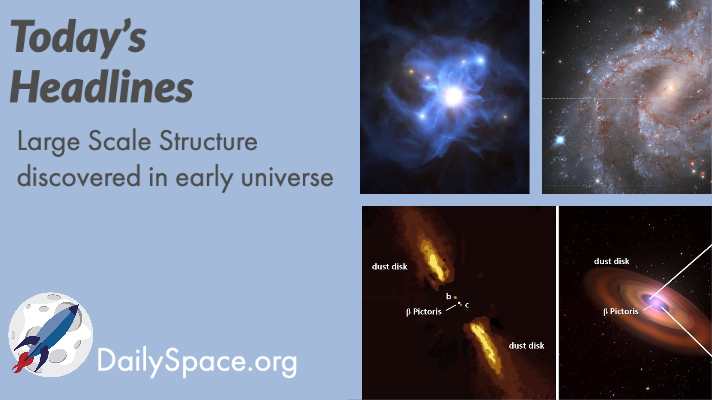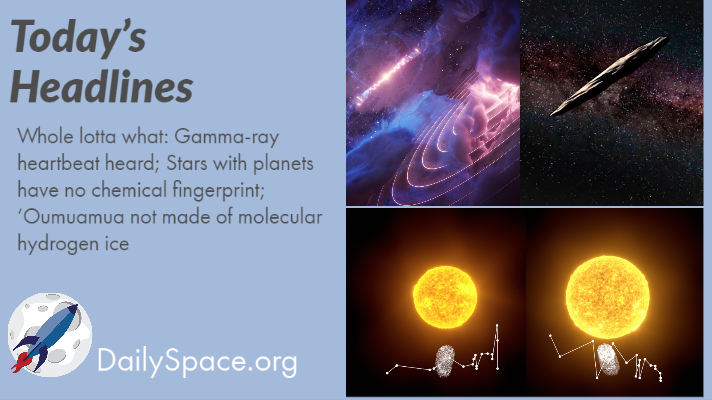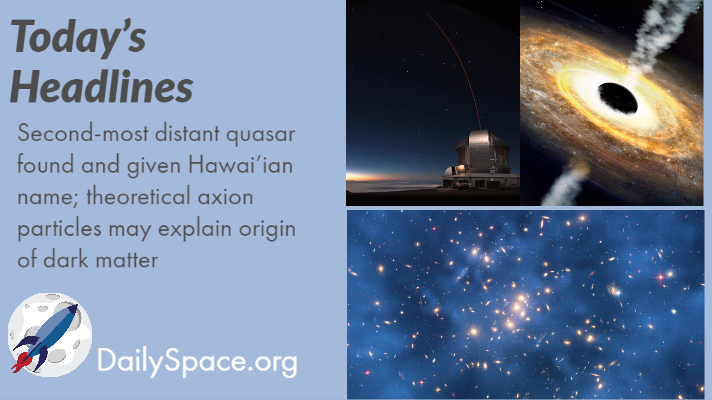
Jan 20, 2021 | Climate Change, Daily Space, Exoplanets, Galaxies, Guest Interview, Jupiter, Neutron Stars / Pulsars, Physics, Planetary Nebulae, Quasar, Supermassive Black Holes, Venus
Our coverage of last week’s AAS meeting continues with new work on the formation of planetary nebula based on Hubble Space Telescope images. Plus, a massive quasar in the early universe, water ice on Ganymede, a super-puff planet, and plans for taking spectra of Venus’ surface, featuring our guest, PSI scientist Dr. Darby Dyer.

Oct 16, 2020 | Daily Space, Exoplanets, Globular Cluster, Quasar, Supermassive Black Holes
Today we look at three astronomical stories! First, simulations show that rocky Super-Earth sized exoplanets have a Jupiter-sized guardian. Then a study of over 700 quasars shows they form because of… magnetic fields, of course! And finally, spare observation time leads to the discovery of a metal-poor globular cluster near the Andromeda Galaxy.

Oct 6, 2020 | Cosmology, Daily Space, Exoplanets, Galaxies, Quasar, Supernovae
Using huge telescopes, researchers have discovered a Large Scale Structure of six galaxies around a seventh galaxy with a supermassive black hole, back in the first billion years of the Universe. Plus Hubble captures a time-lapse of a fading supernova and beta Pictoris c is directly imaged.

Aug 31, 2020 | Daily Space, Galaxies, Gemini North, Quasar, Supermassive Black Holes
Join us today as we examine observations for dual quasars in the process of merging and a star being torn apart by its supermassive black hole. Plus, Hubble data used to map a halo around the Andromeda galaxy.

Aug 18, 2020 | Asteroids, Daily Space, Exoplanets, Quasar
Join us today for a lot of unsatisfying news. First, two objects appear to be pulsing in gamma-rays at the same pace, but they’re 100 light years apart. Next, it turns out that stars with planets look chemically like any other star. And finally, our interstellar visitor, ‘Oumuamua, is NOT made of molecular hydrogen ice.

Jun 29, 2020 | Cosmology, Daily Space, Dark Matter, Gemini South, Quasar, Supermassive Black Holes
Join us today as we look at big news on a big quasar! Pōniuāʻena is the second-most distant quasar ever found, and its existence challenges conventional black hole formation theory. Also, we explain how the theoretical axion particle might be involved in the origin of dark matter.








 We record most shows live, on Twitch. Follow us today to get alerts when we go live.
We record most shows live, on Twitch. Follow us today to get alerts when we go live.